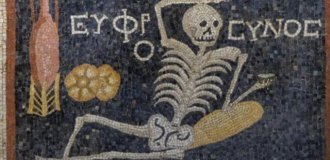Even among the strange structures of antiquity, this architectural design occupies a special place. 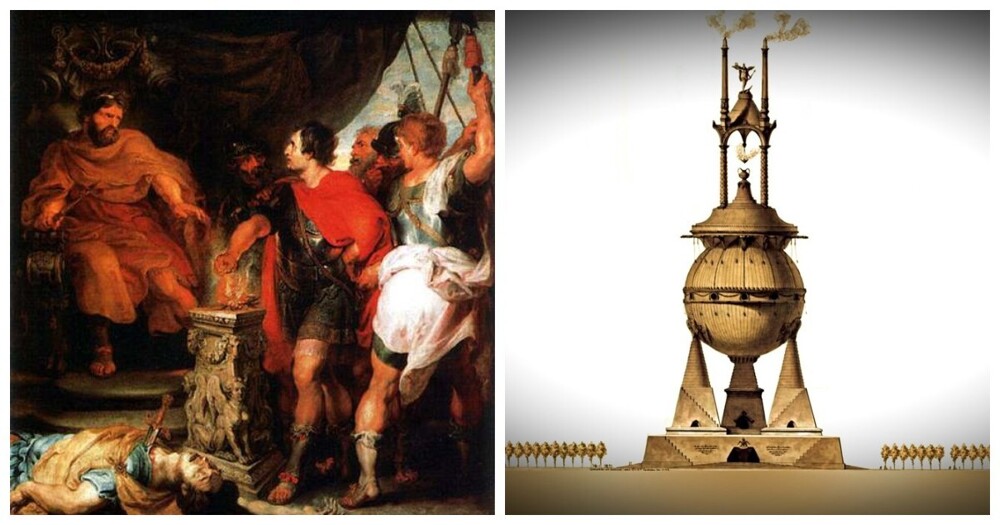
In the tomb of the Etruscan king Lars Porsena, even deprived of imagination and fantasies a person identifies a spaceship, perched atop five pyramidal obelisks. 
Lars Porsena
Ruled by Porsena at the end of the 6th century BC in the city of Clusius. A the final resting place of the ruler is striking in its fundamental nature, because the height of 60 meters exceeded the Great Pyramid, the height of which is greater than 140 meters. This majestic building was located on the territory modern Italy, in the southeastern part of Tuscany. 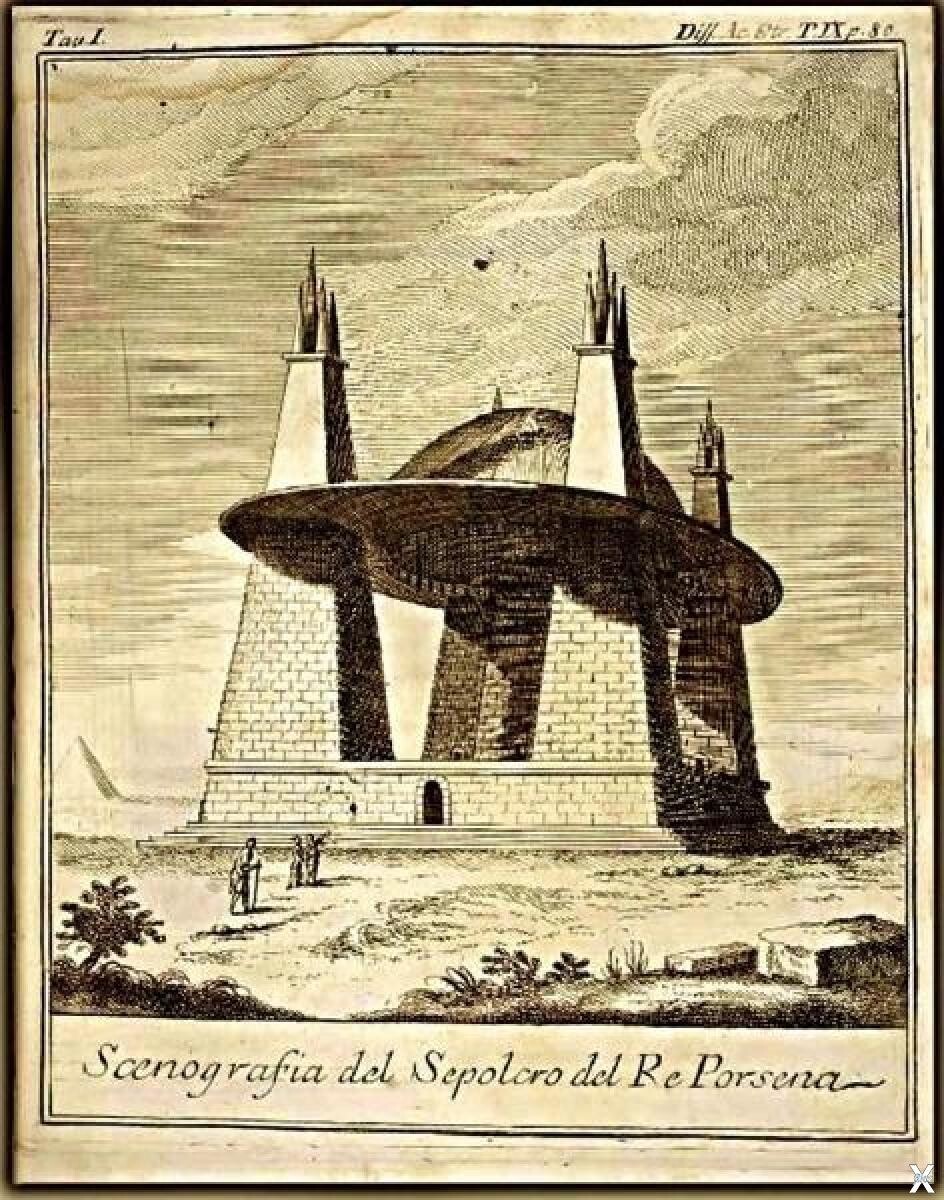
The Roman author Marcus Varro described the structure with reference to Pliny the Elder as follows:
Porsena was buried under the city of Clusium in the place where he built a square monument of worked stones. Each side was 90 meters long and 15 meters high, and under the base there was an inextricable labyrinth into which, if someone enters without the slightest hint of a thread, he can never find a way out.
Five pyramids rise above this square building. one in each corner and one in the center, 22 meters wide at the base and 44 meters high. These pyramids are so narrow in shape that at the top all of them together supported by a copper ball, and on it again a petasus, from with bells hung on chains. They make a ringing sound when they are inflated by the wind, as it was in the old days in Dodona.
There are four more pyramids on this globe, each with 30 meters high, and above them rises the platform on which they are five more pyramids. 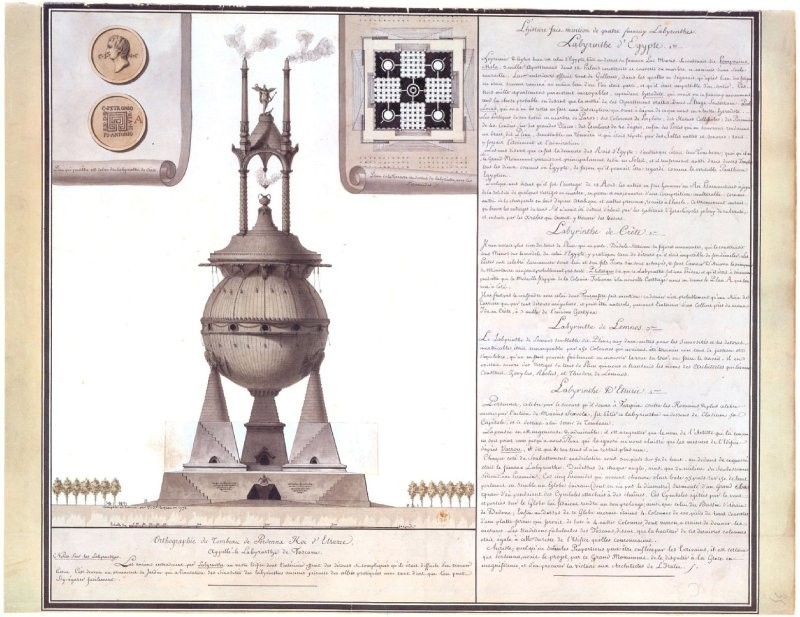
Judging by the description, the tomb really could take worthy place in the list of wonders of the world. Why could? Because she, to Unfortunately, it has not survived to this day. The fundamental object could be destroyed at the same time as the city itself. And made it Roman commander Lucius Cornelius Sulla. Nothing is known about the reasons for the action. due to age. 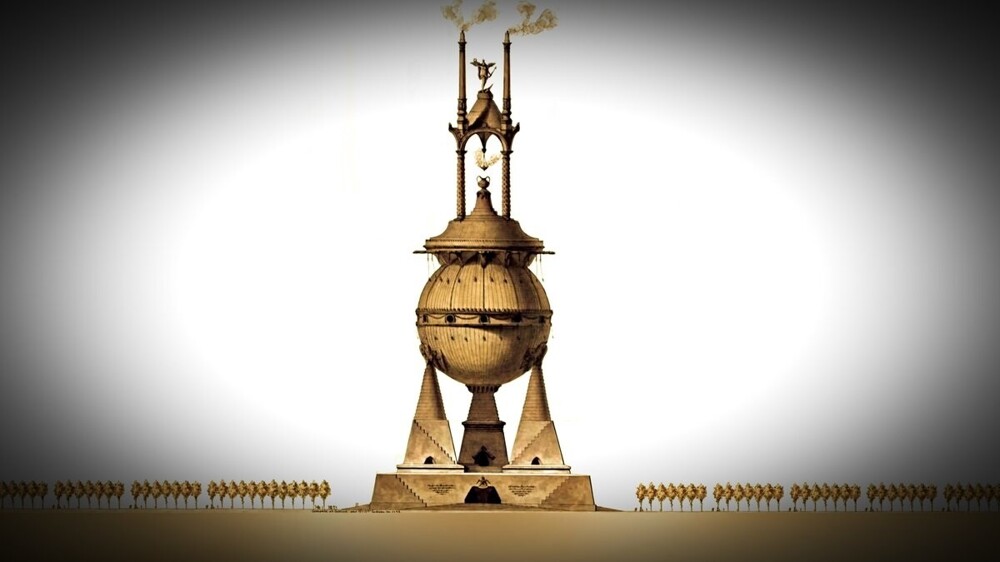
The second possible reason is just the notorious non-format. The construction did not meet the existing standards too much. A everything that goes beyond the generally accepted boundaries always scares people. 
Diagram of the labyrinth and 3D reconstruction of the tomb
Some researchers, such as Angelo Kortenovis, who lived in the 18th century, put forward rather absurd theories. In particular, that the mausoleum was a dangerous weapon and could artificially create lightning. For this reason, he could be wiped off the face of the earth.
And the labyrinth under the building may exist to this day, waiting for enthusiasts to find it under a kilometer layer of soil and dare to enter to learn the secrets of the ancient dungeons.
Add your comment
You might be interested in:


